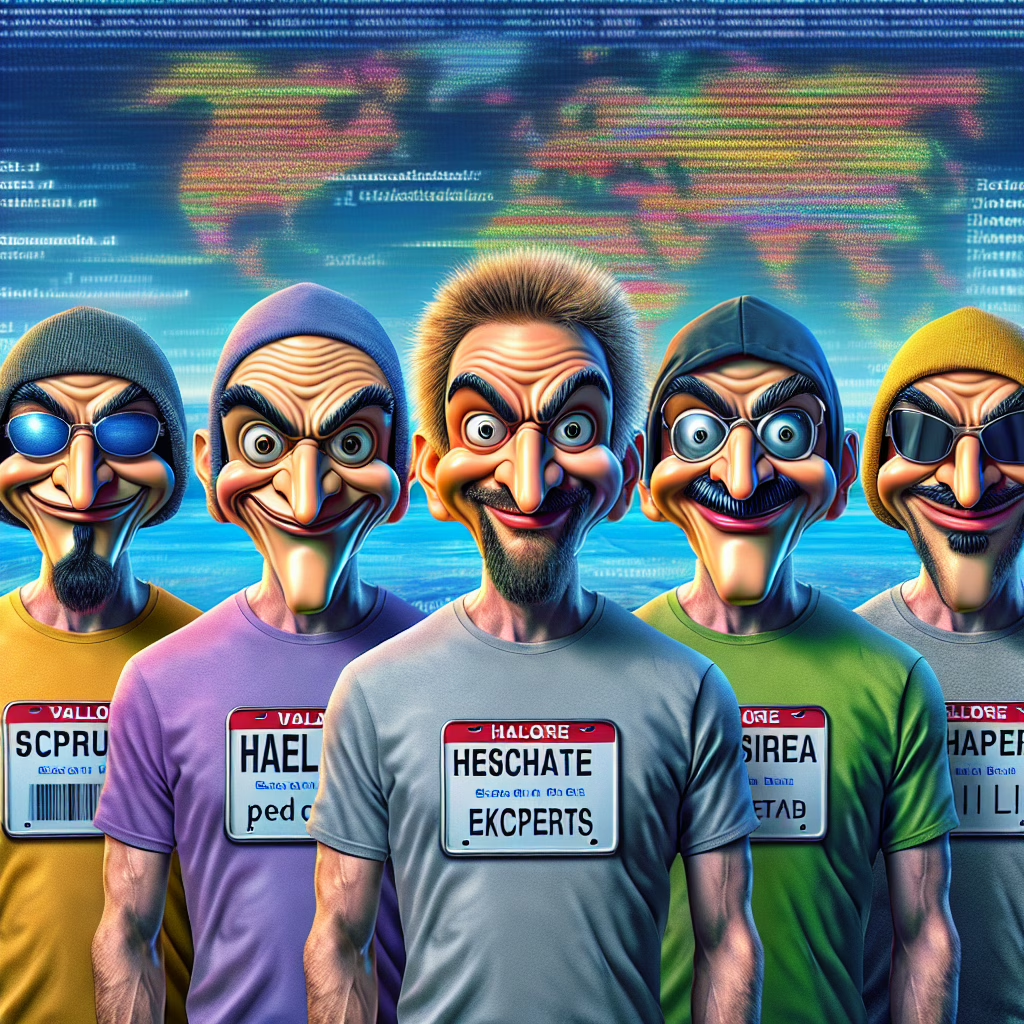In a world where hackers are like the pop stars of the digital underworld, Microsoft and other security experts are stepping up to give these notorious individuals a proper name. Imagine calling out the most infamous hackers like they’re contestants on a reality show. Wouldn’t that be entertaining?
The Need for a Naming System
Let’s face it: when you hear about a cyber attack, it often feels like reading a plot twist from a bad novel. You’ve got your usual suspects: Anonymous, Lizard Squad, and that one guy who seems to change his alias more than he changes socks. But what if we had a standardized naming system? A way to categorize these digital mischief-makers with the same flair as superhero comics? Enter Microsoft and their band of merry security experts!
The idea behind this initiative is not just for giggles; it’s about clarity in communication. Think about it: when you mention “The Joker” in cybersecurity, you might think of anarchy, chaos, and bad jokes. But if we had a clear naming convention, we’d know exactly which brand of chaos we’re dealing with.
Why Naming Matters in Cybersecurity
In cybersecurity, clarity is king! When incidents occur, it’s crucial to identify the hacker swiftly. A well-defined naming system would help organizations better prepare for potential threats. If everyone knows that “Black Hat Billy” is lurking around, companies can bolster their defenses accordingly.
This move by Microsoft is akin to creating a Hall of Fame—or should we say Hall of Shame—for hackers. It’s not just about calling them out; it’s about creating awareness and fostering a culture of responsibility within the tech community.
What Makes a Good Hacker Name?
Now, you might wonder what constitutes an effective hacker name. Is it catchy? Does it invoke fear? Or does it sound like something your cat would do at 3 AM? Names like “The Phantom” or “Cyber Ghost” definitely have that dramatic flair! However, they also need to be descriptive enough to convey the hacker’s modus operandi.
- Catchy and Memorable: A name like “Ransomware Raptor” not only strikes fear but hints at their preferred tactics.
- Descriptive Enough: Names should give a glimpse into their style, like “DDoS Dynamo” for someone who efficiently brings networks down.
- Evocative Imagery: The best hacker names conjure vivid mental pictures, enhancing their infamous reputations.
The goal here is to make these names resonate within the cybersecurity community while also being memorable enough for the average Joe.
The Role of Collaboration in Cybersecurity
This initiative highlights something crucial: collaboration among tech giants and security experts is key to improving our digital landscape. If we can unite on something as seemingly trivial as naming conventions, imagine what else we could accomplish together!
The proposal by Microsoft isn’t just for laughs; it’s a serious attempt to enhance communication across various sectors affected by cyber threats. This collaboration aims to foster better reporting practices and enhance threat intelligence sharing among organizations worldwide.
A Future Where Hackers Have Names
Just picture it: news reports featuring headlines like “Cyber Bandit Caught Red-Handed!” or “The Algorithmic Assassin Strikes Again!” Sounds fun, right? The hope is that by giving hackers distinctive names, we can demystify their actions and make cybersecurity issues more relatable to everyday people.
If the public can grasp who these hackers are—thanks to their catchy names—they might take cybersecurity more seriously. After all, if people can remember who “The Riddler” is from Batman lore, surely they can remember why “Phishing Phil” is bad news!
The Takeaway: Let’s Get Naming!
As we charge into an era where technology becomes ever more entwined with our daily lives, recognizing the challenges posed by cybercriminals becomes essential. A solid naming system could serve as a gateway to greater awareness and understanding.
If you find yourself chuckling at the thought of hacker names resembling comic book characters or movie villains, remember there’s a serious purpose behind this initiative. By following Microsoft’s lead, we might just pave the way for safer online experiences.
So what do you think? Should we start brainstorming names? Or maybe even hold a contest? Let us know your thoughts in the comments below!
We’d also like to extend our gratitude to TechRadar for their insightful article that inspired this post!

